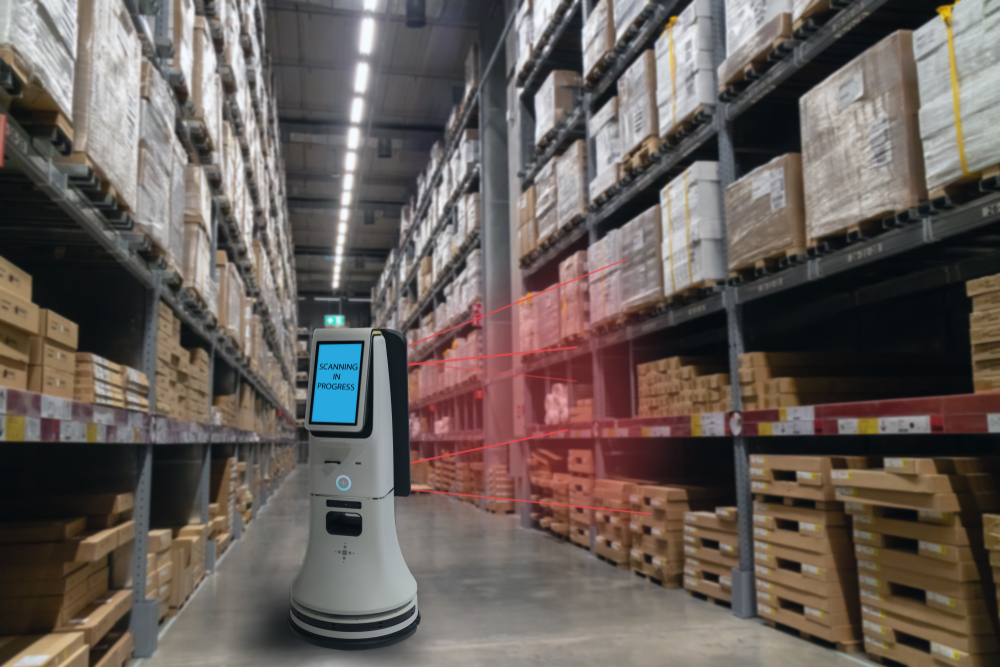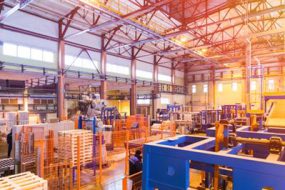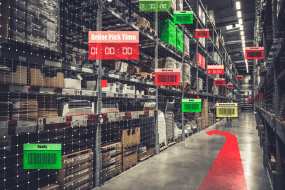

Automation and robotics are redefining the future of fashion warehousing, setting new standards for efficiency, speed, and accuracy in supply chain operations. As the fashion industry evolves to meet rising consumer demands and shorter lead times, these technologies are pivotal in reshaping the warehouse function.
From automating routine tasks like sorting, picking, and packing to optimising inventory management and distribution, automation and robotics streamline operations and reduce human error. This shift enables fashion logistics companies to handle larger volumes with greater precision and faster turnaround times, ultimately creating a more agile and scalable warehousing ecosystem.
Importance of leveraging technology in fashion warehousing
Technology is transforming the fashion warehousing industry by increasing productivity and optimising supply chains. Logistics companies streamline operations using automation, robotics, artificial intelligence, and data analytics. This enables faster order fulfilment and improves inventory accuracy. These innovations reduce costs and help meet growing customer demands for speed and precision.
Current challenges in fashion warehousing
Apparel and fashion warehousing have historically faced challenges, often requiring solutions by deploying automation systems and robotics.
Manual processes and inefficiencies
In today’s fast-paced fashion industry, relying on manual processes for packaging, stocking, and inspecting goods increases the risk of mishandling, damage, and delays, highlighting existing inefficiencies. Any ongoing labour shortage complicates this issue, as finding skilled workers becomes more complex and leads to a greater dependence on a less experienced workforce that is more prone to errors. To remain competitive, the industry must embrace automation and digital solutions that streamline warehousing, reduce errors, and address workforce shortages.
Need for speed and accuracy in order fulfilment
Customer demands in the fashion industry continue to rise. Shoppers expect fast deliveries with 100% accuracy. As a result, warehousing tasks, such as order picking, account for approximately55% of operational costs. Unfortunately, this has also highlighted inefficiencies in fashion warehousing. Research indicates that theaverage rate of e-commerce product returns is between 20% and 30% due to sizing issues, incorrect purchases, and poor packaging.
Inventory management complexities
If not managed, inventory challenges can disrupt growth. Unpredictable demand, rapid turnover, seasonal trends, and logistical inconsistencies can lead to overstock, stockouts, and financial losses. Modern inventory solutions, such as real-time analytics, RFID tracking, and barcode scanning, empower teams to address these complexities effectively. By enabling precise product tracking and seamless data capture, these tools reduce manual errors and improve responsiveness to demand, helping businesses optimise stock levels and enhance sales performance.
Benefits of automation and robotics
Automation and robotics in fashion warehousing bolster productivity and efficiency, reducing facility dwell and transit times for shipped parcels. Here’s a closer look at how automated warehousing has enhanced the fashion industry.
Related Article: Sustainable Logistics: A guide to the circular economy
Increased efficiency and productivity
Warehouse automation enhances employee performance by streamlining supply chain processes, eliminating ineffective tasks and resource waste, and reducing the number of touchpoints. Utilising automation systems can significantly improve the identification of items in a specific order, resulting in faster order picking and quicker order fulfilment.
Improved accuracy and reduced errors
Delivering incorrect orders can harm customers’ trust in a company and its processes. However, implementing automation systems can significantly reduce pick-and-pack errors and improve human accuracy. Investing further in automation can also decrease handling times and accelerate measurement processes, allowing for quickly capturing dimensions, images, and weights.
Implementing automation and robotics in fashion warehousing
Automated order picking and packing systems
Automated warehouse picking employs technologies such as autonomous robots and optimisation tools to improve the picking process. These innovations have transformed fashion warehouse operations, significantly reducing human error and increasing productivity. Over the years, automation has enhanced the efficiency of picking tasks, making warehouses more accurate and productive.
Integration of robotics for inventory management
Robotics and automation solutions can enhance warehouse operations and improve inventory management. These solutions offer scalability, increased accuracy, operational efficiency, and better data integration and management, which are essential for companies to stay competitive in today’s market.
Utilisation of automated guided vehicles (AGVs) for material handling
AGVs, or Autonomous Guided Vehicles, are driverless machines designed for transporting goods and materials within facilities. They have gained popularity as a solution to labour shortages. AGVs navigate using a combination of cameras, lasers, and, in some cases, magnets. Essentially, these machines follow predetermined paths to determine their navigation.
Considerations and challenges
Initial investment and ROI analysis
Adopting warehouse robotics is becoming increasingly popular, but the high initial costs pose a significant challenge for many companies. The long wait to see a return on investment can deter businesses from implementing these technologies. When investing in robotics, companies can save on several fronts, including reduced labour costs, increased space efficiency, lower employee turnover rates, fewer safety violations, and overall cost avoidance. However, there are also expenses, such as setup costs, training, and maintenance.
Integration with existing warehouse systems
Incorporating automation systems and robotics into existing warehouses can be quite challenging. A significant obstacle is ensuring new automated systems communicate effectively with current warehouse systems, such as order processing and inventory management.
Workforce impact and training needs
Achieving automated warehousing can lead to workforce displacement, with workers becoming redundant in some areas of the business. Another potential challenge is investing in extensive employee training, which could lead to a skills gap in the functioning workforce.
Related Article: Exploring the Future of Supply Chain Transparency with Blockchain Technology
Key Takeaway
Automation and robotics will improve task performance in fashion warehousing more effectively than simply increasing the workforce in response to market demand. These technologies help eliminate human errors, optimise warehouse space, and enhance productivity.
Transform your operations. Contact us for tailored business solutions!




